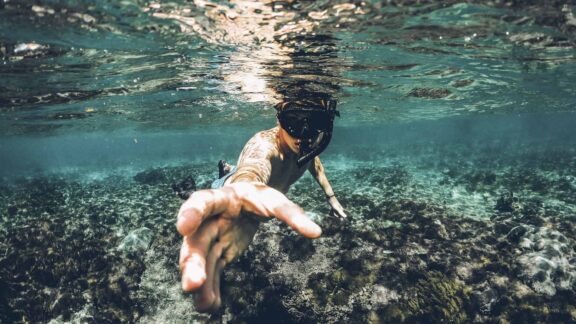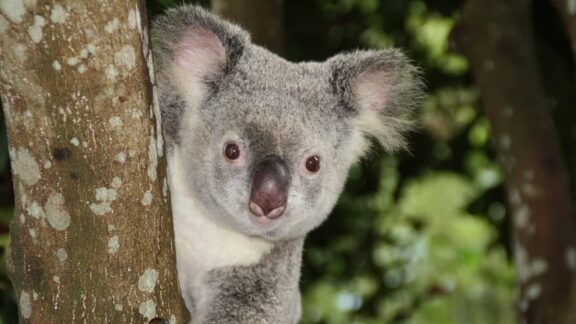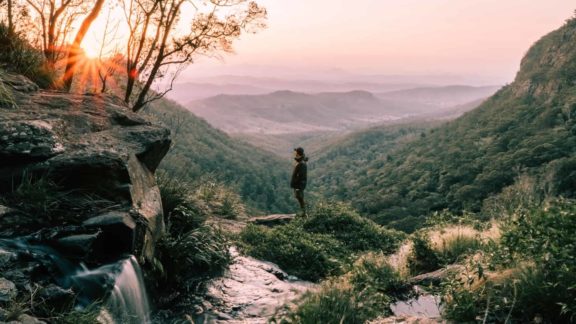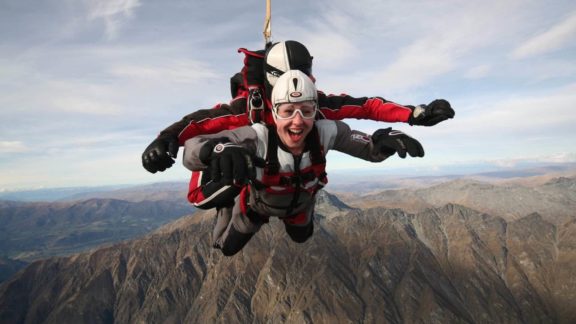|
|
I visited Broome, Western Australia at Easter in 2018. A month ahead of the popular tourist season, the town of Broome and the nearby Cable Beach were quieter than usual, and the temperatures were scorching. Mid to high 30’s during the day, only dropping down to high 20’s at night with high humidity the whole time due to it still being the wet season time of year.
The warm and dry winter months, from May to October are the more ideal times to travel to Broome, which is the Kimberley regions ‘Dry Season’.
Surrounded by the Indian Ocean, the sea is turquoise blue in this spectacular part of the country, against the white sand and red rocks, drawing tourists’ world- wide, the intense colours of this area are unforgettable.
Strolling along the Cable Beach foreshore, or through the small city of Broome, you take in the scenery of wealthy tourists, sporty locals and of course the line of camels being led up from the sand after a long day of tourist beach rides.
With twice daily direct flights from Perth, a three times weekly nonstop flight between Darwin and Broome, as well as seasonal direct flights interstate, Broome is very accessible and well worth the extra distance.
Here are my Top 8 reasons to Visit Broome, Western Australia:
1. Cable Beach
The stunning Cable Beach won’t let you down. The Cable Beach club resort is on the expensive side but worth every penny if you decide to stay here. Alternatively, one of the nearby less expensive resorts, such as the Bali Hai Hotel which is a close distance to this incredible sparkling stretch of beach on the Indian Ocean, is highly recommended.
Swim between the patrolled flags or hire an adjustable lounge chair and umbrella to relax on the beach, read and take in the long coast line. Stroll up for a cold beverage in the late afternoon or meal and take in the Camels and stunning sunset.
An early morning saunter before the sun heats up is recommended along the glistening shore past the Cable Beach Club Resort. You may see a couple of 4 wheel drive vehicles which are allowed on the flat sand past the main swimming area. Take in this hazy part of the coast as you gaze in the distance and reflect on this incredible view.
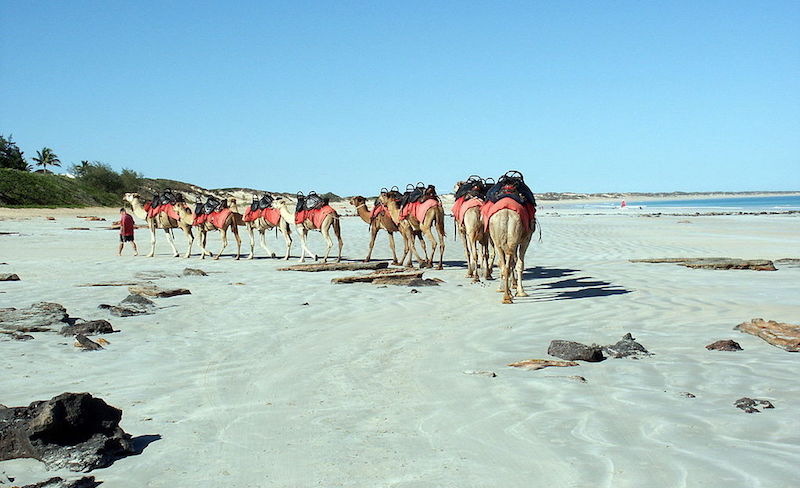
2. Indigenous History
For at least 30 thousand years, Indigenous Australians populated Broome and the Kimberley area, before the Europeans arrived. Groups of families were semi nomadic, and the Indigenous Aboriginals resected the land and traditional beliefs, having a close connection to the land. There are currently an expanding amount of Aboriginal cultural tours and experiences in Broome and surrounding areas.
Indigenous Aboriginal people continue their contribution to Broome, passing on stories and knowledge to visitors. There are over 84 Aboriginal communities located in the Shire of Broome, with 78 classified as remote. The Yawuru people are the Native Title holders of the township of Broome, Western Australia.
I acknowledge and respect the connection of our Indigenous community to Broome and surrounding areas in the past, present and future.
A Guide to Western Australia
3. Pearling History
Recognised in the late 1880s as a pearling port, Broome’s name was known worldwide for the quality and size of the mother of pearl. Pearling’s past is seen through the town, with restored pearling luggers, the world’s oldest outdoor picture gardens and many heritage buildings.
In the early 1900’s Broome became a partying, wild- west town, complete with boarding houses, gambling dens and brothels. The owners of the pearling fleets were Europeans, the shopkeepers were mostly Chinese and the divers mostly Japanese and Aboriginal, the labourers from other parts of Asia. Back in these times up to 400 pearling luggers lined the shores of the Bay.
Broome continues to be known for its pearling industry, which produces some of the most incredible pearls in the world. There are available tours to do to various Pearling farms, providing information, history and purchasing options in the area.
4. Dampier Peninsula and The Kimberley
200km north of Broome is the Dampier Peninsula and Cape Leveque. Stunning areas, with contrasting red cliffs, white sand beaches and clear turquoise water creates the perfect backdrop to a unique cultural and coastal road trip. It is common to visit Cape Leveque (currently accessible only by 4WD along a dirt road, north of Broome) for 2- 3 days.
The Dampier Peninsula is accessed via Cape Leveque Road. The Cape Leveque Road is partially sealed, high clearance 4WD vehicles are still required for the unsealed section and some access roads. Spend at least one night in the spectacular location in beach side huts. Alternatively, there is also a quicker and cheaper one-day tour with a local company Kimberley Wild. This tour is recommended as part of the itinerary on the Broome to Cape Leveque Kimberley Wild day tour. If you take this tour, you will stop at the iconic Beagle Bay church. A spectacular church set within a well organised indigenous community, this church was built by hand and has featured in many Australian films.
The simplicity and history of the area is refreshing to any seasoned traveller.
West Coast Safari Adventure Tours
5. Town of Broome
The small city/town of Broome has a mixed atmosphere, which I would guess is due to the colourful history as well as the varied cultures and fluctuating tourist peak times. To learn more on Broome’s history there are a group of local museums and art galleries reflecting the cultures and stories up until the modern day. Particularly worth visiting, is the Broome Historical Museum which has loads of vintage and historical items and all for a small entry fee (free for children under 16).
There are also a variety of traditional Aboriginal art galleries in town, with some of the paintings depicting the incredible Kimberley surrounding region.
One of the main areas to discover in the city of Broome is Chinatown in the centre of Broome. Chinatown has been the multicultural centre of Broome since the pearling crews first arrived in the 1880s, and worth visiting for both a cultural and historic experience.
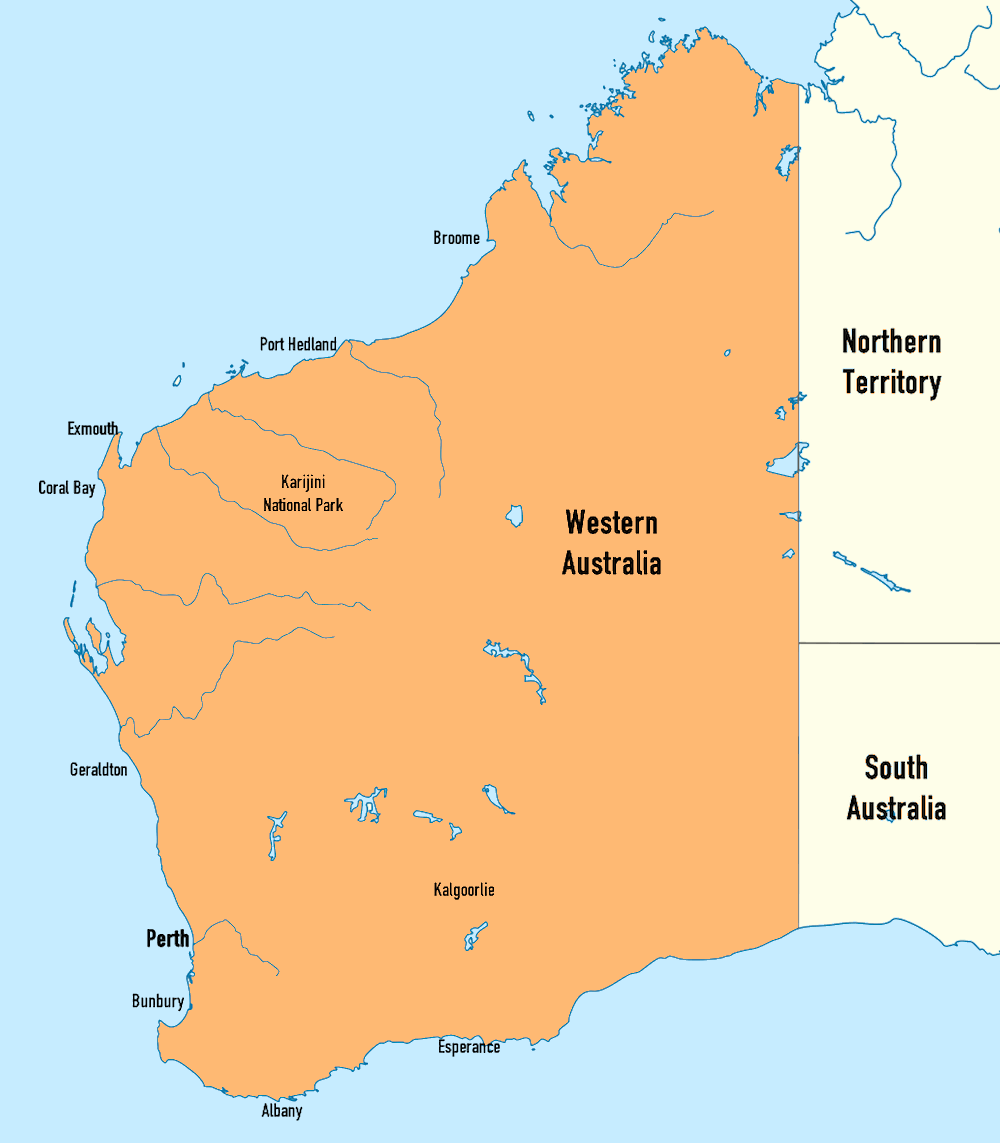
5 Things To Do in Broome on a Budget
6. Desert
Broome being close to the desert affects the intenseness of the hot climate and the red rocks continuing through to Broome to meet the sea. The Great Sandy Desert is located in the north west of Western Australia beside both the Pilbara and southern Kimberley regions. It is the second largest desert in Australia at 284,993 square kilometres. The Gibson Desert is to the south and the Tanami Desert is east of the Great Sandy Desert.
There are two roadhouses, Pardoo, 148km from Port Hedland and Sandfire, 288km. If driving through these remote areas it is very important to stock up and keep the tank full.
The Tanami Desert is rocky and was not fully explored by Australians of European descent until well into the 1900’s. The name Tanami is thought to be influenced by the Walpiri name for the area, “Chanamee”, meaning “never die”. This term relates to the rock holes in the desert which were said never to run dry.
7. Camels and Wildlife
Sunset Camel rides are popular along Cable beach. Gazed upon from the drinkers at the Cable Beach bar upon the hill, the camels are an extraordinary sight, to see the outline of a string of camels in front of the back drop of a stunning sunset over the Indian Ocean.
Broome also has plenty of fishing opportunities, drawing keen fishermen, attempting to catch some of the varying tropical types of fish. Roebuck Bay has a vast variety of quality, safe fishing opportunities.
There are also Dolphins and Whales in the area, worth keeping an eye out for on coastal treks, not to mention stingers/ jelly fish, mozzies and midges.
8. Diverse culture and harmony
Whilst walking along cable beach at sunset or through the city of Broome, the cultural diversity from Indigenous Aboriginals to European, and the strong Asian influence being in close proximity to ASIA, resulted in the early population being enticed by the promise of fortune.
Varying cultures including Indonesian, Malay, Chinese, Japanese, European and Aboriginal have blended to create a captivatingly welcoming and colourful personality that is the soul of Broome.
Somewhat surprisingly, a local told me that there in little racism in the central area and surrounds of Broome. There are a couple of outspoken troublemakers in the community, but they are widely known by the local community and council to not take very seriously.
While the town centre of Broome has a mixed atmosphere, and I wouldn’t stroll alone through the city at night. A visit to the night market is well worth the time, presenting live music and local artists selling their own work.
The Night Market will reveal the diversity of the area. You will see tourists, locals with stalls, varying cultures all mingling together on most evenings on the bay side of Broome.
CONCLUSION
Broome, Western Australia is one of those standout places which leave an everlasting impression. The “Australian-ness” of the desert, history and ocean, along with the diversity of the area provide rich experiences and opportunities. Whether its relaxing at the beach or pool- side, or exploring the surrounding landscape and culture, you wont regret visiting this important and incredible part of the world.
Author: Kate Rae is a travel writer hailing from Melbourne, Australia. She loves coffee, silly humour and driving out of the city! Kate documents her top travel tips, secrets and best Australian destinations on her blog http://notatourist.net/

